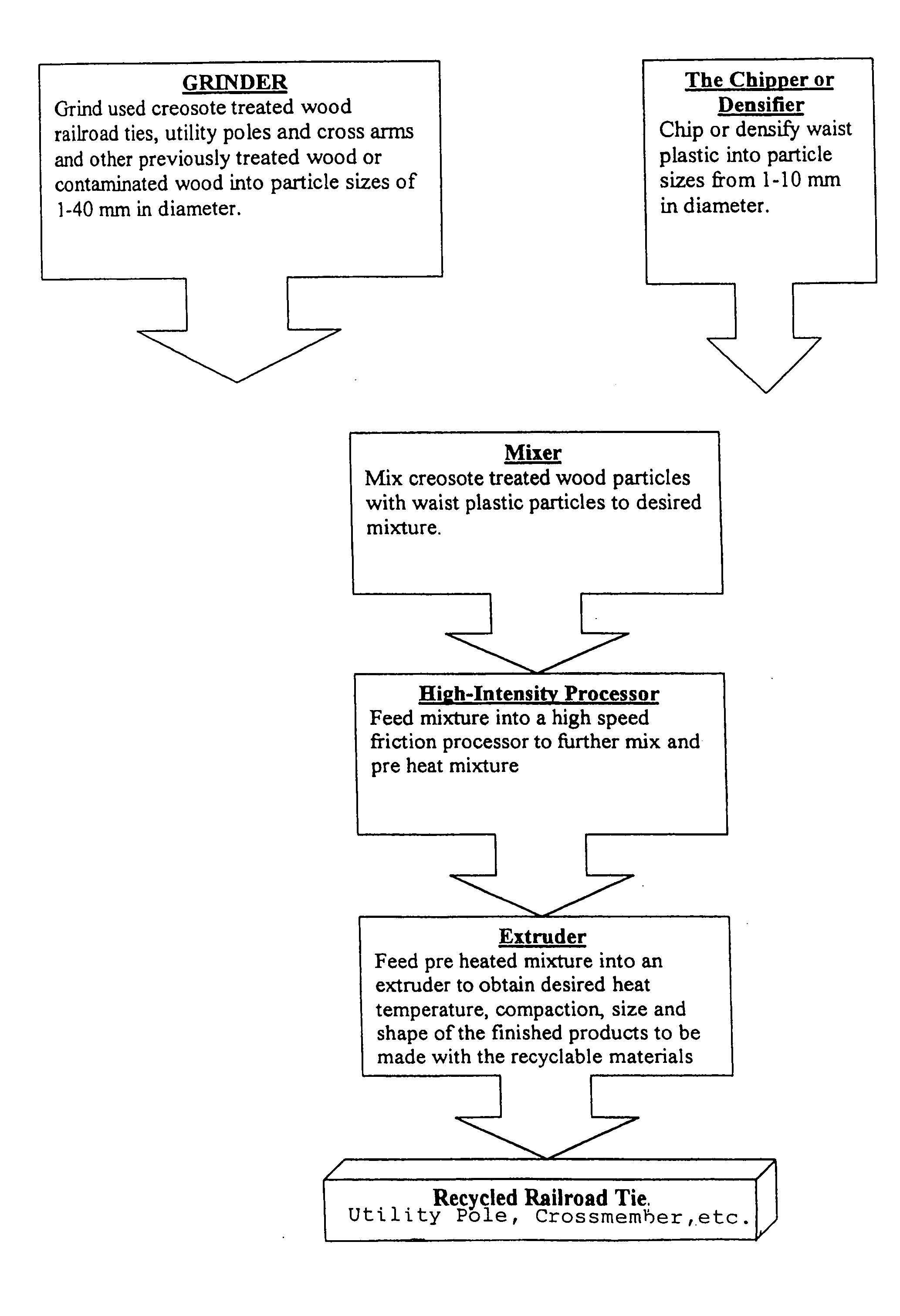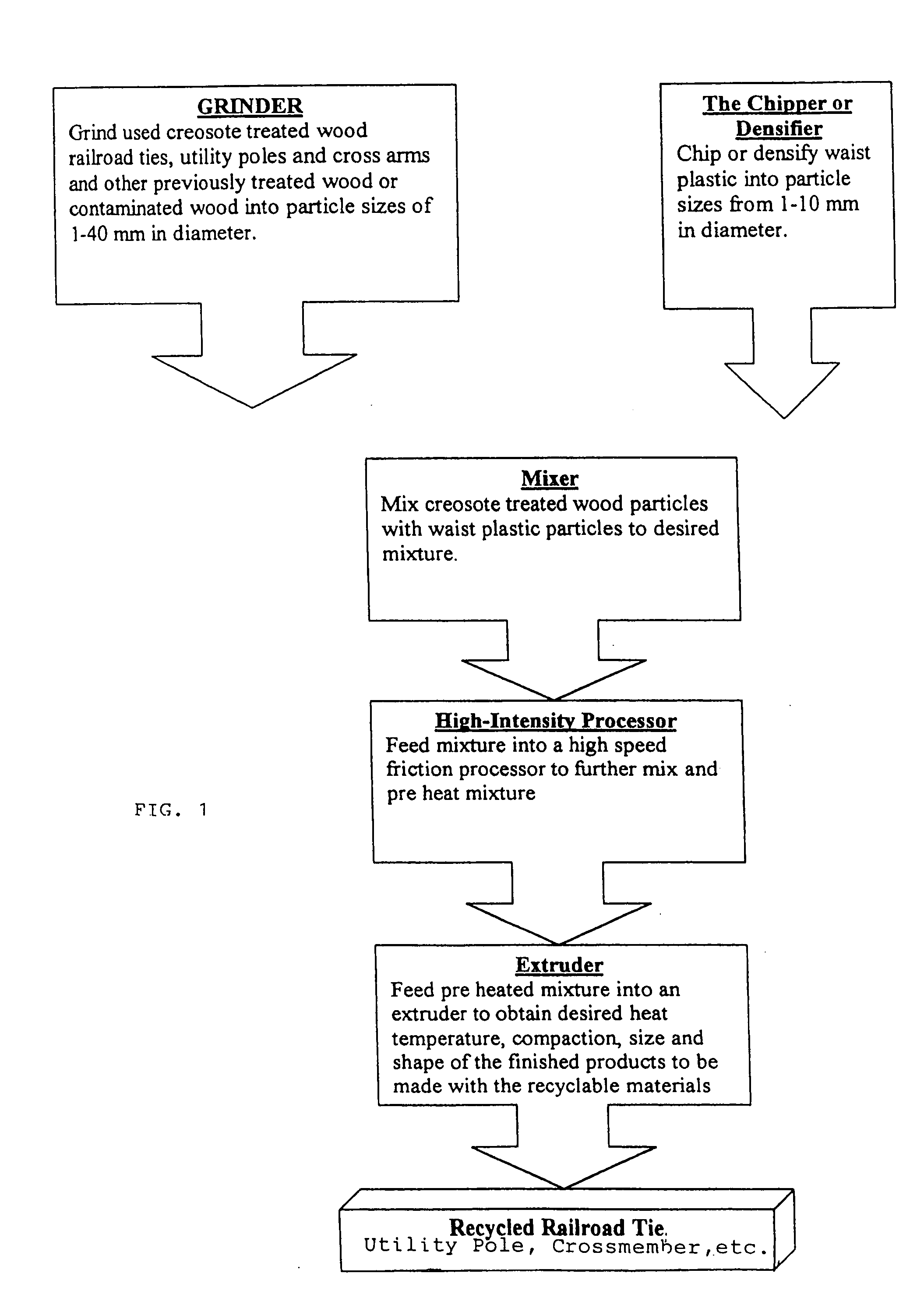Structural members fabricated from waste materials and method of making the same
a technology of structural members and waste materials, applied in the direction of manufacturing tools, building repairs, roads, etc., can solve the problems of increasing the cost of repair, increasing the cost of maintenance, etc., and achieve the effect of prohibitive repair costs
- Summary
- Abstract
- Description
- Claims
- Application Information
AI Technical Summary
Benefits of technology
Problems solved by technology
Method used
Image
Examples
Embodiment Construction
[0012] The following detailed description represents the best currently contemplated modes for carrying out the invention. The description is not to be taken in a limiting sense, but is made merely for the purpose of illustrating the general principles of the invention.
[0013] Referring now to FIG. 1, waste wood, such as chemically-treated railroad ties utility poles, etc., may be placed within a grinder 10 or chipper to obtain a chip size ranging from one to forty millimeters in diameter, the grinder 10 or chipper may be of the type which may be portable and towable. The ideal chip size may range from ten to forty millimeters. One suitable grinder may be a CBI Magnum Force Series 6000 Hz Hog manufactured by Continental Bio-Mass Industries, Inc.
[0014] Waste thermoplastic, including polyethylene and / or polypylene or other readily available thermoplastic may also be chipped to obtain a chip or particle size ranging from one to twenty millimeters in diameter. Thermoplastics soften whe...
PUM
| Property | Measurement | Unit |
|---|---|---|
| diameter | aaaaa | aaaaa |
| diameter | aaaaa | aaaaa |
| temperature | aaaaa | aaaaa |
Abstract
Description
Claims
Application Information
 Login to View More
Login to View More - R&D
- Intellectual Property
- Life Sciences
- Materials
- Tech Scout
- Unparalleled Data Quality
- Higher Quality Content
- 60% Fewer Hallucinations
Browse by: Latest US Patents, China's latest patents, Technical Efficacy Thesaurus, Application Domain, Technology Topic, Popular Technical Reports.
© 2025 PatSnap. All rights reserved.Legal|Privacy policy|Modern Slavery Act Transparency Statement|Sitemap|About US| Contact US: help@patsnap.com


